Colosseum has long been one of Rome’s major tourist attractions. Also called Flavian Amphitheatre, is located just east of Palatine Hill.

Image source: https://search.creativecommons.org/photos/b33d8031-cf99-40e4-9792-0c5f2516269f by Arch_Sam
The Colosseum, built in Rome under the Flavian emperors, was the scene of thousands of hand-to-hand combats between gladiators, between men and animals, and of many larger combats, including mock naval engagements. It is uncertain whether the arena was the site of the martyrdom of the first Christians.
History
It was built in Rome under the Flavian emperors: Vespasian (69-79 CE), Titus (79-81 CE), and Domitian (81-96 AD). The construction of the Colosseum was started between 70 and 72 ce during the reign of Vespasian, based on what was the golden house of Nero. Vespasian, of relatively humble origins, chose to build a public amphitheater that could accommodate tens of thousands of Romans, and which would replace the private lake of the tyrannical emperor. The structure was officially dedicated in 80 ce by Titus in a ceremony that included 100 days of games. Subsequently, in 82 ce, Domitian completed the work by adding the top floor.

Image source: https://search.creativecommons.org/photos/a144c02d-3770-453a-a1a7-7a98fb57ca01 by Jean-Pierre Dalbéra from Paris, France
Later in History
In 404 CE, with the changing times, the games of the Colosseum were abolished by Emperor Honorius. It was damaged by an earthquake in 422 CE and was repaired by the emperors Theodosius II and Valentinian III. Colosseum continued to be used for wrestling matches and animal hunts up to the 6th century CE but it began to show signs of neglect.
The great earthquake of 1231 CE caused the collapse of the southwest facade and the Colosseum became a vast source of building. Pope Alexander VI leased the Colosseum as a quarry, it was still used for the occasional religious procession and play during the 15th century CE.
In 1744 CE Pope Benedict XIV prohibited any further removal of masonry from the Colosseum and consecrated it in memory of the Christian martyrs who lost their lives there. This, however, did not stop locals from using it as an animal stable.
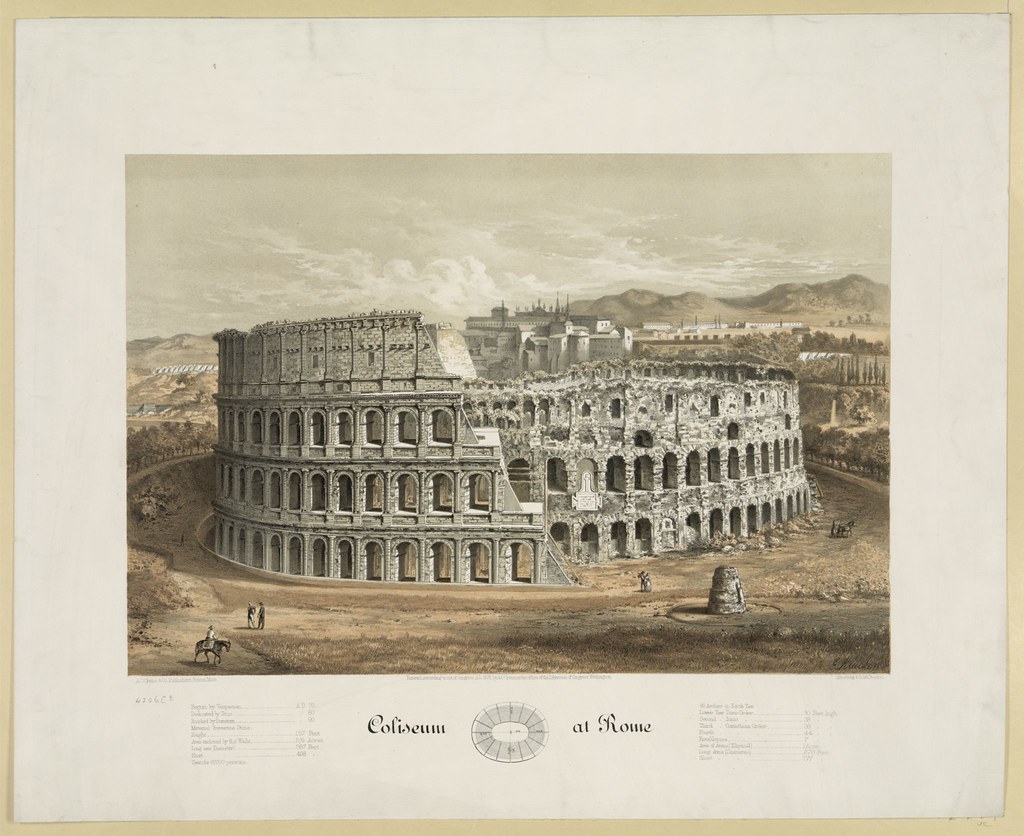
Image source: https://search.creativecommons.org/photos/5eb5bd5f-c0ed-4e64-943c-4c4d87ed3846 by pingnews.com
The 19th century CE did, though, begin to see the fortunes of the once great amphitheater improve. The Papal authorities sought to restore parts of the building. In 1871 CE the Italian archaeologist Pietro Rosa removed all of the post-Roman additions to reveal a still magnificent monument, an enduring testimony to both the skills and the vices of the Roman world.
Architecture
Unlike earlier amphitheaters the Colosseum is a freestanding structure of stone and concrete, measuring 18 by 156 meters. Several materials
were employed for the building of the Colosseum, all of them easily found or produced in the Roman area: first of all, there is the travertine, a limestone, then tuff for the other pillars and radial walls, tiles for the floors of the upper storeys and the walls; finally, concrete for the vaults.

Image source: https://search.creativecommons.org/photos/d959949e-4bd6-4314-8c66-412f2eccba19 by jdlasica
Three of the stories of the arena are surrounded by arcades framed by decorative semi-columns of the Doric, Ionic, and Corinthian orders; the basis of the Renaissance codification known as the assembly of the orders was due to the ascending arrangement of the columns of the structure.

Image source: https://search.creativecommons.org/photos/92ec35fe-b1a7-4f7d-94dc-4c78ed898064 by MCAD Library
The amphitheater could accommodate about 50,000 spectators, protected from the sun by a huge retractable velarium (awning). Support masts extended from corbels built at the top of the Colosseum, and it took hundreds of Roman sailors to manipulate the rigging that extended and retracted the velarium. The Colosseum was damaged by lightning and earthquakes in medieval times and, also by vandalism. Having been treated as little more than a quarry for more than 1,000 years, all the marble seats and decorative materials have disappeared. In the 19th century, began the conservation of the Colosseum by Pius VIII, and a restoration project was undertaken in the 1990s.
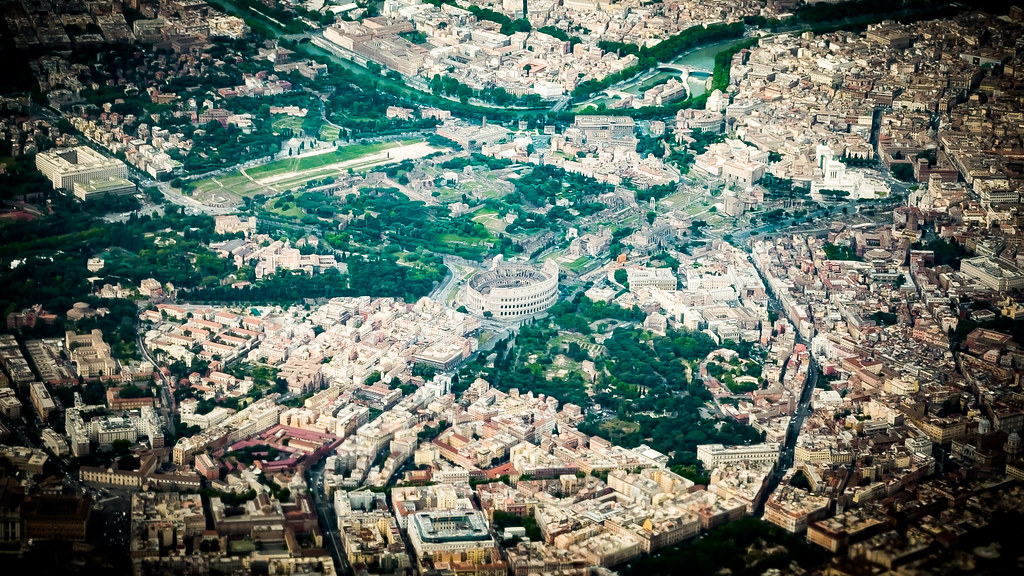
Image source: https://search.creativecommons.org/photos/6e334b3d-e6a4-4790-8d38-e918a0feb727 by Giuseppe Milo (www.pixael.com)
The ordered beauty and formal regularity of the Colosseum’s exterior are created by three storeys of superimposed arches with engaged columns. These columns are of different orders on each storey:
- the first floor carried Doric columns;
- the second carried Ionic;
- the third Corinthian.
- The top floor had Corinthian pilasters and small rectangular windows.
There were eighty entrances:
- seventy-six of these were numbered and tickets were sold for each;
- two entrances were used for the gladiators;
- the final two entrances were reserved for the Emperor.
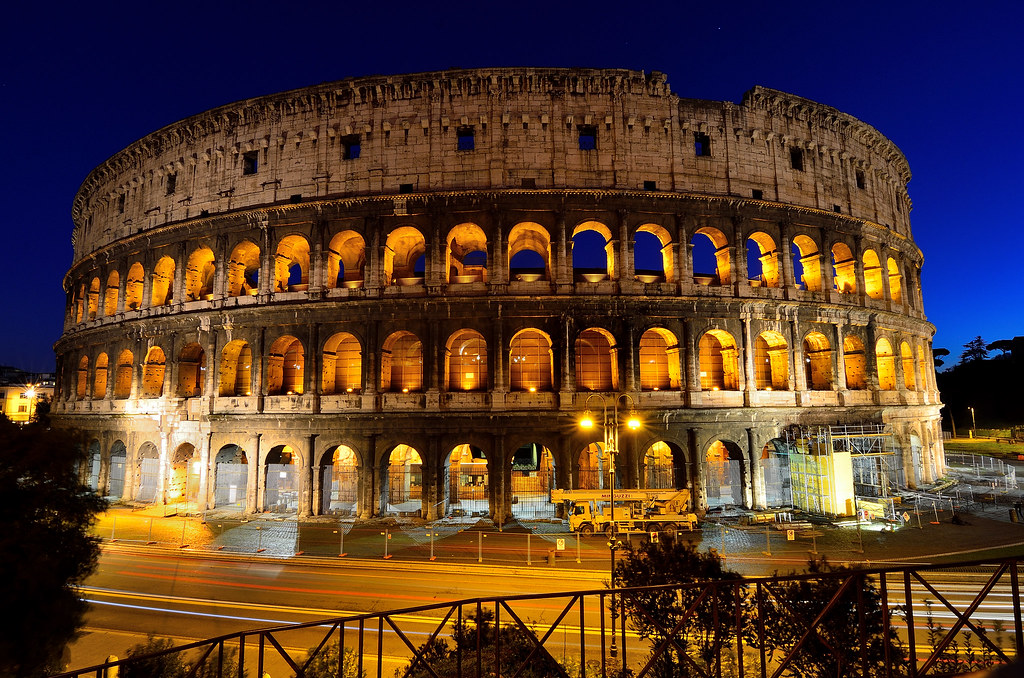
Image source:https://search.creativecommons.org/photos/59ec8a92-a4ad-445d-88f1-5436570701d5 by Javier Vieras
Encircling the arena was a wide marble terrace protected by a wall within which were the prestigious ring-side seats or boxes from where the Emperor would watch the events. Beyond this area, marble seats were divided into zones: for richer private citizens, middle-class citizens, slaves, and foreigners, and finally standing room for women and the poor.
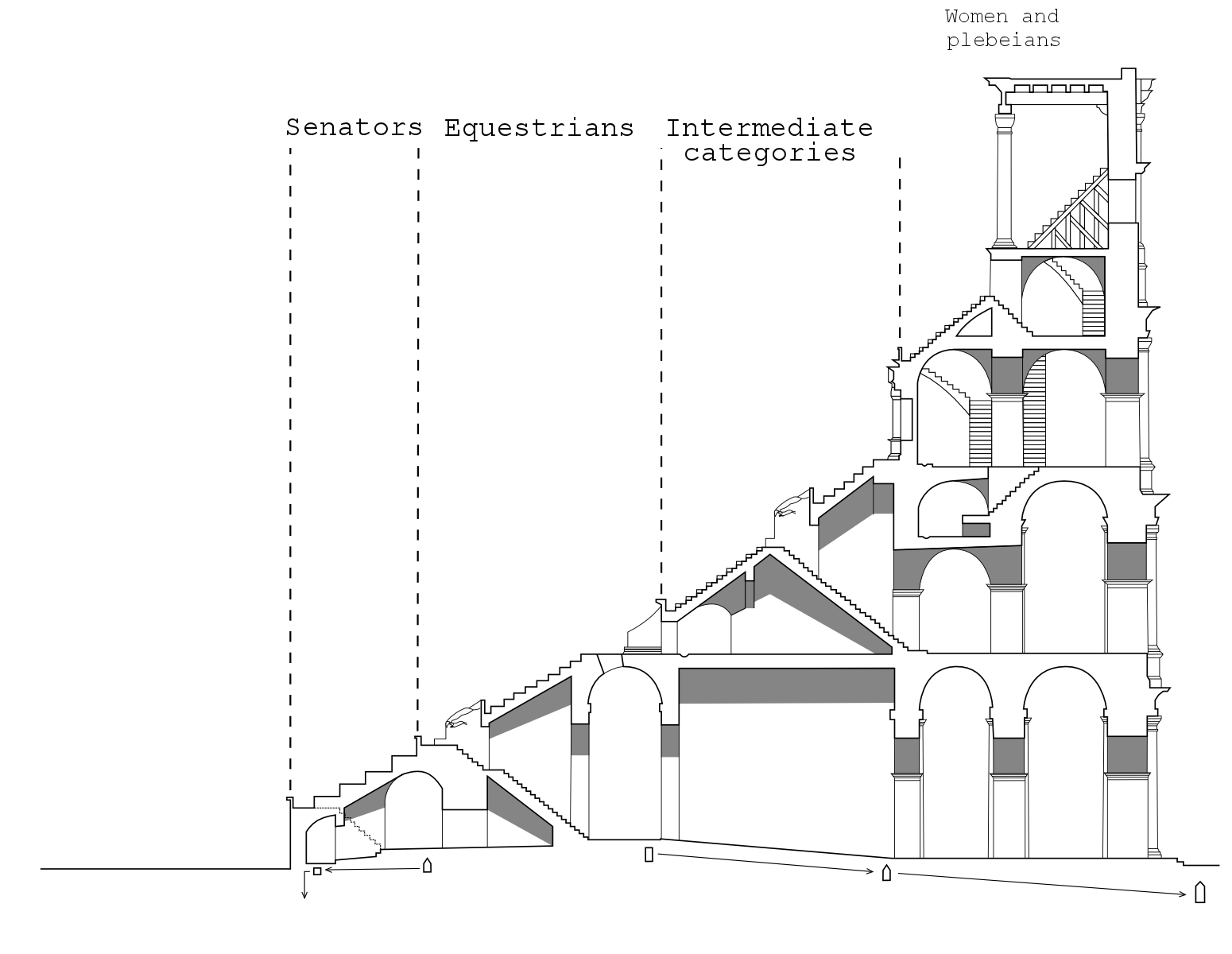
Image source: https://en.wikipedia.org/wiki/Colosseum#/media/File:Colosseum-profile-english.png
Games & Shows
The performances in the Roman arenas were designed to entertain, demonstrated the Emperor’s generosity, and provided the opportunity for ordinary people to see their ruler in person.
The shows often lasted all day and the gladiators usually kicked off the show with a procession of chariots accompanied by trumpets and a hydraulic organ, once disassembled everything went around the arena, greeting the emperor with the famous verse: Ave, imperator, morituri te salutant!
During the shows the arena was covered with yellow sand taken from the hill of Monte Mario; on special occasions, the arena was covered with specially colored sand, or mixed with speckles of glittering minerals.
The Colosseum was also the scene of many executions during the lunchtime lull, for example, the killing of Christian martyrs. Seen as an unacceptable challenge to the authority of Pagan Rome and the Emperor, Christians were thrown to lions, shot down with arrows, roasted alive, and killed in a myriad of cruelly inventive ways.

Image source: https://commons.wikimedia.org/wiki/File:Jean-Leon_Gerome_Pollice_Verso.jpg
What’s the Colosseum today?
The Colosseum today is a major tourist attraction in Rome. There is now a museum dedicated to Eros located on the upper floor of the outer wall of the building. The Colosseum is also the site of Roman Catholic ceremonies in the 20th and 21st centuries. Pope Benedict XVI led the Stations of the Cross called the Scriptural Way of the Cross at the Colosseum on Good Fridays.
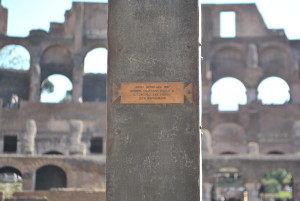
Image source: https://en.wikipedia.org/wiki/Colosseum
Info sources:
http://www.britannica.com/topic/Colosseum
http://www.the-colosseum.net/architecture/materials_en.htm
http://www.bbc.co.uk/history/ancient/romans/colosseum_01.shtml
